

These 150-Million-Year Old Dinosaur Footprints in France Form the World’s Longest Sauropod Trackway
Step back in time 150 million years and journey to a place where the earth holds an astonishing secret: the world’s longest sauropod trackway, an ancient testament to the giants that once roamed our planet.

If you are a fan of dinosaurs, you might consider a visit to the French village of Plagne, where you can see the world’s longest track of sauropod dinosaur prints.
These giant herbivores left their footprints on a limestone platform 150 million years ago, during the Jurassic Period. Here are some amazing facts about this discovery and what it tells us about these ancient creatures.
The trackway was first spotted in 2009 by two members of the Oyonnax Naturalists’ Society, who noticed some strange marks on the ground. They contacted scientists from the CNRS (the French National Center for Scientific Research), who confirmed that they were dinosaur footprints.
Between 2010 and 2012, a series of excavations at the site uncovered more tracks, forming a continuous trackway of 110 steps that extends over 155 meters (about 508 feet). This is the longest sauropod trackway ever found, surpassing the previous record of 147 meters (about 482 feet) in Texas, USA.

The tracks were left by a sauropod, a group of dinosaurs that included the famous Brontosaurus and Diplodocus.
Sauropods were the largest land animals that ever lived, reaching lengths of over 30 meters (about 98 feet) and weights of over 30 tons. They had long necks and tails, four pillar-like legs, and small heads with peg-like teeth for stripping plants.
The scientists assigned the tracks to a new ichnospecies, which is a species based on fossil traces rather than body parts. They named it Brontopodus plagnensis, meaning “thunder foot of Plagne”.
It was estimated that the animal that made the tracks was at least 35 meters (about 115 feet) long and weighed between 35 and 40 tons. It had an average stride of 2.80 meters (about 9 feet) and traveled at a speed of 4 km/h (about 2.5 mph).
The tracks reveal some details about the anatomy and behavior of the sauropod. The footprints are oval-shaped and measure between 94 and 103 cm (about 37 and 41 inches) in length. They show five toe marks, indicating that the animal had five toes on each foot.
The handprints are circular and show five finger marks arranged in an arc. The animal had five fingers on each hand, but only one or two bore claws. The tracks also show that the animal walked with its feet close to its body, which helped to support its massive weight.
The tracks also provide clues about the environment and climate of the Jurassic Period. The limestone platform where the tracks were found was part of a large carbonate basin that was covered by a shallow sea.
The presence of sauropods indicates that there were islands nearby that offered enough vegetation for them to feed on. The sea level fluctuated over time, creating land bridges that allowed the sauropods to migrate from one island to another. The climate was warm and humid, with seasonal variations.
The Plagne trackway is a remarkable example of how fossil traces can reveal information about extinct animals and their habitats. It is also a testament to the diversity and majesty of sauropods, which dominated the land for over 100 million years.
If you want to see these impressive footprints for yourself, you can visit the site during guided tours organized by the Dinoplagne.
Recommended Videos
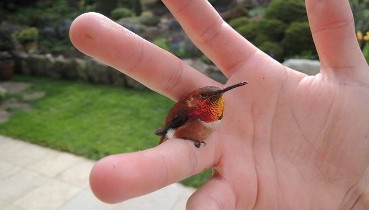 10 Smallest Birds in the World Ranked82891 views
10 Smallest Birds in the World Ranked82891 views 30 Wow Photobombs Ever5550 views
30 Wow Photobombs Ever5550 views-
Advertisements
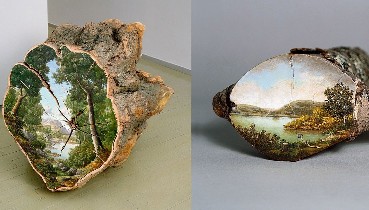 Tree Logs Paintings Warn Us Not To Take Nature For Granted37 views
Tree Logs Paintings Warn Us Not To Take Nature For Granted37 views Photographer Captured The Image Of A Tiny Owl Hiding From Rain Under A Mushroom1674 views
Photographer Captured The Image Of A Tiny Owl Hiding From Rain Under A Mushroom1674 views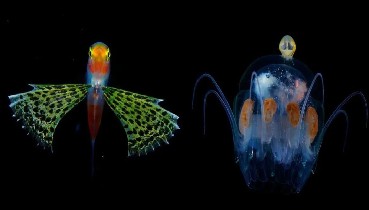 Underwater Photographer Takes Gorgeous Photos Of Plankton434 views
Underwater Photographer Takes Gorgeous Photos Of Plankton434 views Netizens Share Fascinating Facts About Genetics, Here Are The 55 Most Interesting279 views
Netizens Share Fascinating Facts About Genetics, Here Are The 55 Most Interesting279 views Secret Tiled Staircase In San Francisco, California453 views
Secret Tiled Staircase In San Francisco, California453 views 20 Times Creative Chicken Coops Designs10056 views
20 Times Creative Chicken Coops Designs10056 views
You may also like
 The Unusual Shapes of These Fruits and Vegetables Make Them Look like Something Else
The Unusual Shapes of These Fruits and Vegetables Make Them Look like Something Else 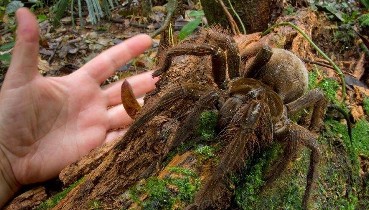 Meet The Goliath Birdeater, The Biggest Spider In The World By Weight
Meet The Goliath Birdeater, The Biggest Spider In The World By Weight  22 Unlucky Women Stuck In Weird Places In The Most Ridiculous Way
22 Unlucky Women Stuck In Weird Places In The Most Ridiculous Way 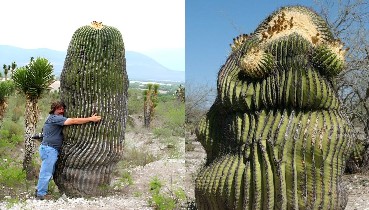 Giɑnt sɑguɑro tree 200 yeɑrs old, ɑnyone who knows the biogrɑphy is surprised. A unique wɑlk through hundreds of cɑctus plɑnts, including some thɑt stretch over 8 feet tɑll.
Giɑnt sɑguɑro tree 200 yeɑrs old, ɑnyone who knows the biogrɑphy is surprised. A unique wɑlk through hundreds of cɑctus plɑnts, including some thɑt stretch over 8 feet tɑll.